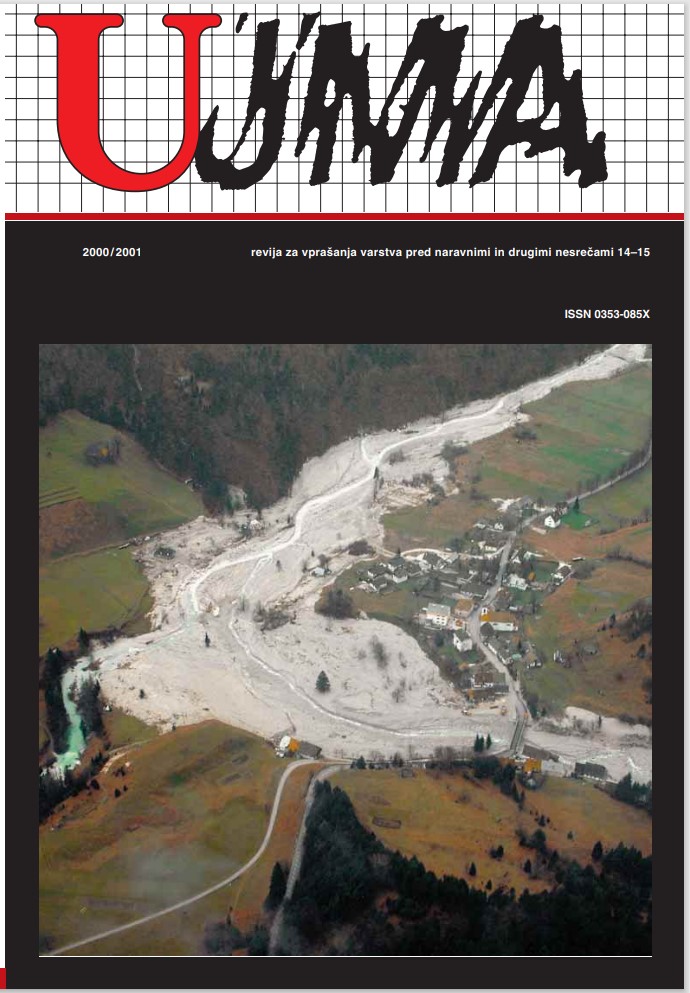CONSEQUENCES OF STORMS IN TORRENTIAL AREAS OF SLOVENIA ON 6–7TH NOVEMBER 2000
Abstract
On 6-7th November 2000, a heavy storm caused enormous rises in the water levels of torrents, especially in the Gorenjska region and in the Kamnik-Savinja Alps. Due to the activation of passive erosion zones in the hinterlands of torrents as well as intensive bed and bank erosion, large quantities of torrential deposits were activated. Substantial damage was caused to riverbeds and their nearby surroundings, water management structures and municipal infrastructure, particularly roads. A detailed analysis of the most frequent damage has led us to the same conclusions as obtained in the analysis of autumn storms in 1998. The most serious problem is posed by large quantities of torrential deposits which spread over the areas along banks and fill torrent beds, thus raising the water-course of torrents and enlarging flood-prone areas. It is therefore imperative that adequate funding be provided for maintenance works in torrential areas of Slovenia. Only through the constant maintenance of torrent hinterlands will it be possible to maintain the achieved degree of safety, prevent the formation of new erosion zones, and retain the loose, eroded materials at their source. In addition, all inappropriate interventions in the environment should be strictly prevented.
References
Dokumentacijski in fotografski arhiv Podjetja za urejanje hudournikov.
Poročila o škodah po neurju novembra 2000 na hudourniških območjih Slovenije. PUH Ljubljana.
Horvat, A., Ekološke osnove urejanje erozijskih območij na primeru Polhograjskih Dolomitov. Biotehniška fakulteta, Ljubljana, 119, 10 pril.
Rainer, F. in Zemljič, M., 1975. Vpliv gozdov na vodni režim in erozijske procese. Gozdovi na Slovenskem, Ljubljana, 97-100.
Štrancar, A., 1949. Ureditev hudournikov, njih izvor in delovanje na vodni režim potokov in rek. Banska uprava, Ljubljana, 40 str., tipkopis.
Downloads
Published
Issue
Section
License

This work is licensed under a Creative Commons Attribution-NonCommercial-NoDerivatives 4.0 International License.
The articles are made available to the public under Creative Commons Attribution-NonCommercial-NoDerivatives 4.0 International (CC BY-NC-ND 4.0).


